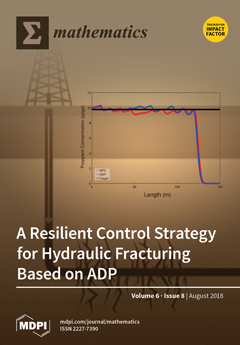In this paper, we study submanifolds in a Euclidean space with a generalized 1-type Gauss map. The Gauss map,
G, of a submanifold in the
n-dimensional Euclidean space,
, is said to be of generalized 1-type if, for the
[...] Read more.
In this paper, we study submanifolds in a Euclidean space with a generalized 1-type Gauss map. The Gauss map,
G, of a submanifold in the
n-dimensional Euclidean space,
, is said to be of generalized 1-type if, for the Laplace operator,
, on the submanifold, it satisfies
, where
C is a constant vector and
f and
g are some functions. The notion of a generalized 1-type Gauss map is a generalization of both a 1-type Gauss map and a pointwise 1-type Gauss map. With the new definition, first of all, we classify conical surfaces with a generalized 1-type Gauss map in
. Second, we show that the Gauss map of any cylindrical surface in
is of the generalized 1-type. Third, we prove that there are no tangent developable surfaces with generalized 1-type Gauss maps in
, except planes. Finally, we show that cylindrical hypersurfaces in
always have generalized 1-type Gauss maps.
Full article





